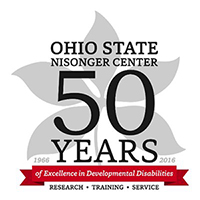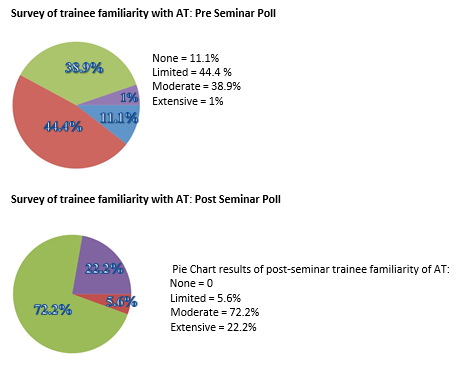Preparing Tomorrow's Leaders: How the Nisonger LEND Program at The Ohio State University Provides Training in Technology Supports
April 16, 2018

|
Understanding technology is a critical leadership skill in neurodevelopmental disabilities. Leaders in our field interface with technology in almost all aspects of our work: Electronic Medical Records, telehealth, wearable devises, assistive and environmental technologies. One challenge our LEND program faces is how to provide information and skills about technology to a diverse group of LEND Trainees. To start to address the "technology" issue we have implemented a two-pronged strategy to provide introductory didactic and advanced interdisciplinary clinical experiences to LEND trainees.
The Toy and Technology Library (TTL) at Nisonger Center has been in existence since 1990 as a lending library for families with individuals with disabilities. The TTL serves two primary service functions:
1) To loan adapted toys and devices to families.
2) To provide assistive technology consultative services to individuals with disabilities.
A second and equally vital function of the TTL is to provide education. The TTL serves as a training site for our LEND trainees and also provides short term training to graduate and undergraduate students from Ohio State on topics related to disability and technology.
Over the past five years, we have explored a range of strategies to provide technology training to the LEND trainees: didactic lecture, hands-on labs, and clinical rotations in the library. None of these strategies alone, allowed us to adequately meet our objectives and the needs of trainees with such varied backgrounds and interests.
Our current curriculum includes core training for all LEND trainees (consisting of a didactic lecture and a lab experience) and an advanced clinical rotation for those students interested in technology and clinical practice. We now require all trainees to complete the didactic and lab early in their LEND training allowing those interested in the advanced clinical training ample time to complete the clinical rotation.
Didactic instruction consists of a two-pronged approach: First trainees are presented with an overview of technology related topics and resources; then in seminar 2, trainees participate in a hands-on lab designed to encourage trainees to explore and use a variety of technology tools.
Advanced clinical instruction is available to interested trainees. This individualized clinical training addresses the interests and specific learning objectives established by the LEND trainee and the AT faculty mentor. Experiences during the advanced training may include literature reviews, comprehensive resource analyses and/or direct clinical consultations.
Pre and post seminar surveys are given to LEND trainees to measure learning. A majority of trainees report increased knowledge of technology and technology resources (see charts below).

In summary Nisonger's LEND program includes training in technology competencies for all trainees. These competencies address the value of access to tools and technology that support independence and participation and recognizes that technology supports can make the difference between independence and dependency. It is our goal that learning about technology and its potential for supporting independence and community participation will increase our trainees' advocacy for technology to support individuals with disabilities.







